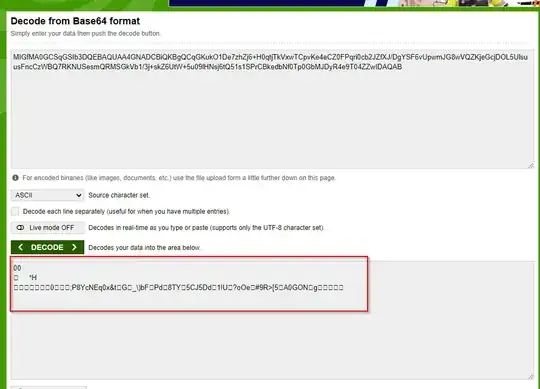let's look at the public key in this post as an example: https://crypto.stackexchange.com/a/35105
MIGfMA0GCSqGSIb3DQEBAQUAA4GNADCBiQKBgQCqGKukO1De7zhZj6+H0qtjTkVxwTCpvKe4eCZ0FPqri0cb2JZfXJ/DgYSF6vUpwmJG8wVQZKjeGcjDOL5UlsuusFncCzWBQ7RKNUSesmQRMSGkVb1/3j+skZ6UtW+5u09lHNsj6tQ51s1SPrCBkedbNf0Tp0GbMJDyR4e9T04ZZwIDAQAB
when I decode this base64 string using an online tool, I get a public key with some funny characters as below shows:

00 *H ��0�;P8YcNEq0x&tG_)bFPd8TY5CJ5Dd1!U?oOe#9R>[5A0GONg�
I don't understand why it contains non-ascii characters, isn't that public key should be ascii format rather than unicode (which contains funny characters) format?